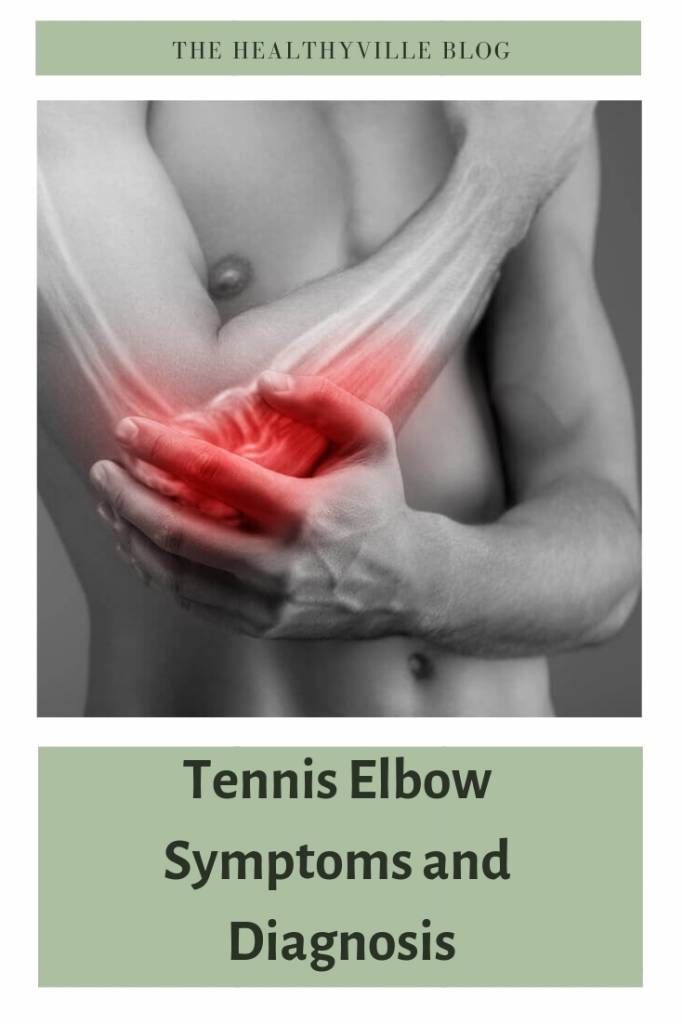Learn the tennis elbow symptoms and see how your doctor can diagnose it, in order to receive treatment on time and start the recovery process.
The tennis elbow or epicondylitis is a pathology characterized by pain in this joint as a reason for a prolonged repetition of specific wrist movements.
Epicondylitis, commonly known as tennis elbow, is inflammation of the epicondylar tendons. These are the ligaments that join the muscles of the forearm and the hand with the lateral epicondyle of the humerus, on the outer side of the elbow. Inflammation is caused by microtrauma due to muscle overload.
It is a very common condition within the sports field, hence its name, but also in the workplace. There are professions with greater tendency to the development of this injury by the repetition of concrete gestures.
This is the case of jobs in factories, office work with computers, painters or any activity that involves an overexertion of the muscles responsible for the movements of the hand.
Tennis elbow symptoms
Tennis elbow is a frequent condition among athletes, as frequent as the athlete’s foot.
The tennis elbow symptoms appear progressively. In general, pain is usually felt on the outside of the elbow and may extend to the forearm.
There is discomfort when grasping objects, when moving the fingers, when turning the wrist and when pressing the affected area in the points of union of the muscle with the ligament. Also, there is a lack of strength in the forearm.
Diagnosis of tennis elbow
It is of vital importance to make a correct differential diagnosis of the cause of the pain in the elbow, to be able to carry out an adequate treatment, since, there are different pathologies that can have similar symptoms to the tennis elbow symptoms which lead to confusion.
Treatment-resistant epicondylitis, due to confusion in the diagnosis, is usually due to trapping of the posterior interosseous nerve in the lateral region of the elbow. These are some conditions that refer to a pain similar to that caused by the tennis elbow:
- Neuropathy due to entrapment of the radial nerve.
- Osteochondritis of the humeral radio joint.
- Pain in surrounding muscles, which although they are not in direct relation with the area in which pain refers, can generate discomfort.
- Alterations in the head of the radio, located on the outside of the elbow.
For a correct diagnosis of epicondylitis, the following protocol must be followed:
-
Patient’s medical history
An essential part of the diagnosis is the patient’s medical history, which will refer to all of its previous conditions.
- Visual examination: a thorough examination of the physical appearance of the affected area. Signs of inflammation, alterations in the skin, deviation of the alignment of the joint, etc. will be sought.
- The epicondyle will be located and a palpation will be performed to check if the patient feels pain in that particular area.
- Evidence of forced varus: force applied to the elbow that causes the distal face of the elbow to move towards the midline of the body. The test will be positive if the patient reports discomfort.
- Pain in the extension of the fingers against a resistance.
- Examination of the mobility of the elbow and head of the radius, cervical spine and the entire joint complex of the shoulder.
- Gather information about the patient’s daily activities that may have an influence on the pathology. We must also take into account the pharmacological treatments to which the patient has recently been subjected.
Pronation and supination
It is important to understand the concept of pronation and supination of the forearm to understand the performance of the following tests.
Supination is the lateral rotation of the forearm and hand. The palm of the hand is directed upwards with the thumb outwards. Pronation is the medial rotation of the forearm and hand. In this case, the palm of the hand looks down with the thumb inward.
- Maneuver of Millis. The patient will remain seated and with the arm slightly rotated, with dorsal extension of the hand and flexion of the elbow.
The physiotherapist will place one hand on the elbow and the other on the lateral part of the forearm. You will need to try to supinate the forearm. This means to turn the forearm and hand up against the resistance of the doctor’s hand. If pain manifests itself when performing this action, it is likely that we will face a case of tennis elbow.
- The chair test. You will need to lift a chair in two different ways. When you hold it with your hand pronated and elbow in extension, you will refer pain. However, there will be no discomfort when grabbing it with the supinated hand.
-
Other tests
If with the previous examination it is not possible to determine that the cause of the pain is epicondylitis, other complementary tests will be carried out:
- Analytical, to rule out the existence of uric acid crystals in the joint caused by a hyperuricemia.
- Electromyography, to rule out nerve compression syndromes.
- Radiology and complementary tests.
Don’t forget to SHARE the tennis elbow symptoms and diagnosis with your friends and family on your social networks!

